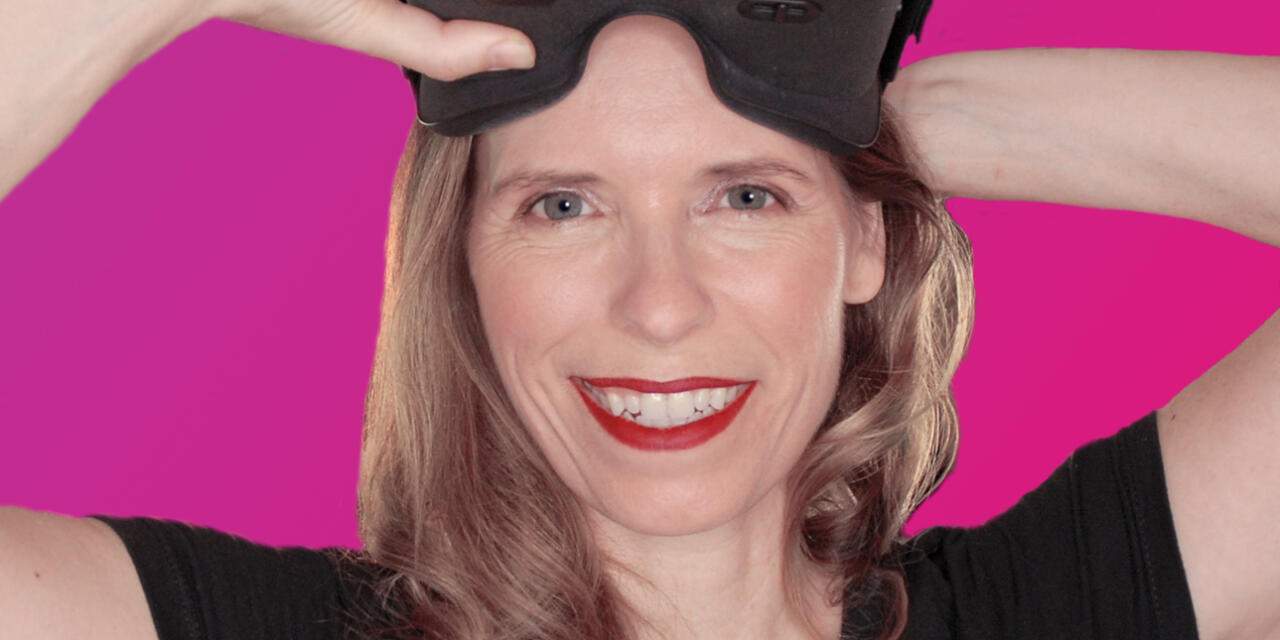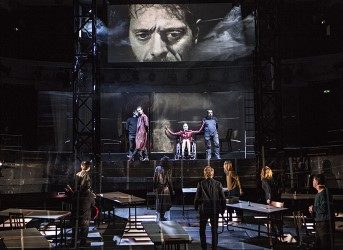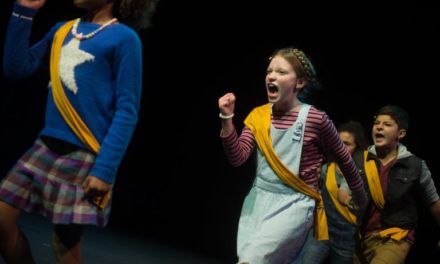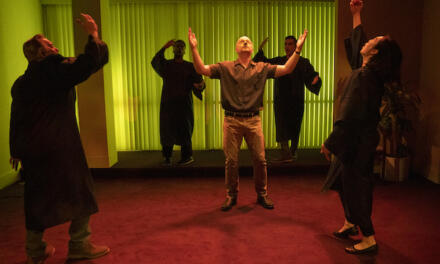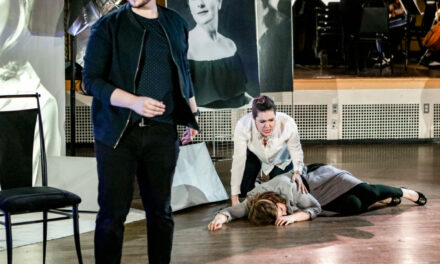Deirdre V. Lyons is currently living in Los Angeles and has been in over 75 Film and Theatrical productions throughout the west coast. In 2019 she joined the ensemble cast of The Under Presents, a theater experience in VR that was selected as a finalist for an Emmy Award for Outstanding Innovation in Interactive Media, and won the VR Awards Experience of the Year. She was Prospera in The Under Presents: Tempest, a theatrical and technological first: a live, part scripted/part improvised, immersive theatrical experience that audiences attend from home. Deirdre was also a principle in Finding Pandora X by Double Eye Studios, Winner of Best Immersive Experience in Venice VR Expanded. She now works with The Ferryman Collective on producing and performing in original VR theatrical shows, including PARA and Krampusnacht, the latter was a finalist for the PGA Innovation Award. Their current production, Welcome to Respite premiered in June 2021 also won several awards and it is a very unique immersive VR performance that also uses live-action role playing elements. We talked about her career path, the creation process and how the future of VR acting could be like.
If you would tell your 20 years younger self that in 2020 you will be mainly performing in virtual reality what would your younger self think of this?
Deirdre V. Lyons: Oh! Yeah, that would be the same answer as I get when I tell most people what I do:
“Huh?”
It’s a hard concept to grasp unless you’ve been in VR, because the magic of VR isn’t easy to describe, but it 100% understood when experienced. Right now, it feels like that moment when smartphones came out, with internet on them, but they were so slow they were basically unusable. But you could see where it was going and you knew when it got there, it would be glorious.
You were performing both in analogue and digital immersive performances. Did it help in your VR acting practice that you were performing in IRL immersive theatre performances?
Deirdre V. Lyons: Absolutely! Everything I have done in VR has been some form of immersive theater and there is a direct correlation between the IRL and VR versions. I’ve been doing immersive theater steadily in IRL since 2016, and it has felt like it was training me for the work I am currently doing in VR because it is a natural platform for that form or storytelling.
Immersive theater is popular in large cities, like New York and LA, but not as often found in smaller towns. VR brings this to places that has never seen immersive theater, it gives access to people all over the world, which hopefully inspires them to see and experience more.
And what mechanisms of acting did you have to “reinvent” in VR?
Deirdre V. Lyons: VR theater is very reliant on voice to color the scenes. To bring emotion, it is the most alive thing in the computer-generated VR world. We are very used to listening to the nuances of voices when we talk to someone, either in person or on the phone, that we unconsciously pick up on subtle changes, where the voice is coming from in the room and the emotional tones and pitches emanating from our voice. I focus a lot on that for conveying emotion.
There is also the simplicity of masque work that is relevant to working in VR. Clean, direct movements. A tilt of the head, a dramatic arm gesture, or turning away. And because the avatars still tend to be limited, big gestures work best as subtle, film-like movements aren’t readable at all.
What do you miss from the theatrical VR experiences compared to the live ones? In one interview you mentioned that there are differences but there are also similar profound features in both.
Deirdre V. Lyons: There are a lot of challenges in VR theater; it is still finding its way and often clunky and awkward. As a trained dancer, I miss the use of my body and its coordination, being able to move in a space fluidly, pick up props easily and manipulate them, the dexterity and expression of hands as well as the subtle expressions one uses to convey complex emotions.
Currently, everything we do in VR is through controllers, which aren’t as precise as our hands. And in our show, we aren’t using full-body tracking, so our legs are also not under our control. They will animate when we move, but we can’t kick or dance like they would in real life. Most movement is centered around our upper body, and I miss that as well.
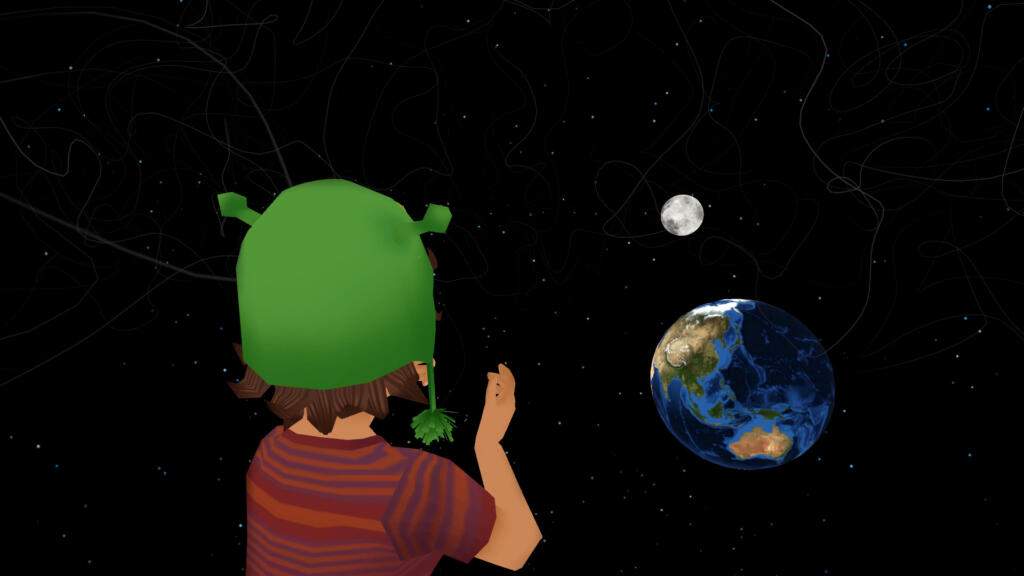
Welcome to Respite.
What was the most surprising for you in VR theatrical performances – both in preparation both in performances – in Tempest, Finding Pandora X or Welcome to Respite?
Deirdre V. Lyons: In all the previous shows I had done before starting to produce our own with Ferryman Collective, I’d seen moments of beautiful intimacy between my character and an audience member. A brief sense of connectedness and feeling “seen”…this surprised me as it is all digital, and I wanted to explore that more, which is why I brought Welcome to Respite to the team, it provided a vehicle for more prolonged moments of intimacy during the experience.
And in preparation, it surprised me how much this was like all the theater I had done in my life, particularly Finding Pandora X, which had a lighting designer, a sound designer, a stage manager, all under the direction of Kiira Benzing. Tender Claws shows were all on their own bespoke app, so it felt like a cross between a game and theater, with all the menus on the controllers, but it was still theater. It was just that now, I put on a headset to walk on stage.
Do you see a changing notion of liveness in VR compared to live performances? If yes, how could you define it?
Deirdre V. Lyons: The Germans have a word “maskenfreiheit” or “carnival license” which refers to the freedom that comes with wearing a mask, which can be positive or negative. However, it feels like there is safety in VR that isn’t as easy to find IRL. People come in on headsets, a literal mask, they feel seen but more anonymous. Therefore, they can be a little more open, doing or saying things they wouldn’t necessarily do in real life. On occasion, this can lead to a more destructive audience member, but I do find that this is the exception rather than the rule.
Can you tell us: How did you prepare for Welcome to Respite? Why did you choose this subject? What is your strategy to approach this rather delicate subject of mental states?
Deirdre V. Lyons: In 2019 I had been asked to record a voice-over for an IRL production of Welcome to Respite. I then came to see the show when it was completed and felt very moved by it. After we had finished PARA and Krampusnacht, we wanted to take some time and work on a project we could submit to festivals, and I kept thinking about Welcome to Respite.
It was a short piece, only needed two actors, and had the emotional connection that I had yet to see explored in an extended way in VR. I had no idea if it would work, but I felt like it would. Luckily, the team agreed to give it a try, and I am grateful that we did because it is way better than I could have ever imagined it to be, thanks to the incredible talent of our team.
Lyndsie Scoggin, the creative director, worked very hard to stay true to depicting dissociative identity disorder from a place of understanding and respect. It was a subject she was inspired to explore, but not exploit. And while the piece is for entertainment, we do hope that it generates understanding and empathy.
How do you see technically whether social VR platforms such as VR Chat are suitable to enable future theatrical endeavors? Can you imagine tools that could create more tailor-made solutions for the actors to create a more lively experience?
Deirdre V. Lyons: We are very grateful to VRChat and all the other social VR platforms out there that allow creators to do this kind of work, they do the heavy lifting of creating a network experience for users that allows us the freedom to come in and just be creative.
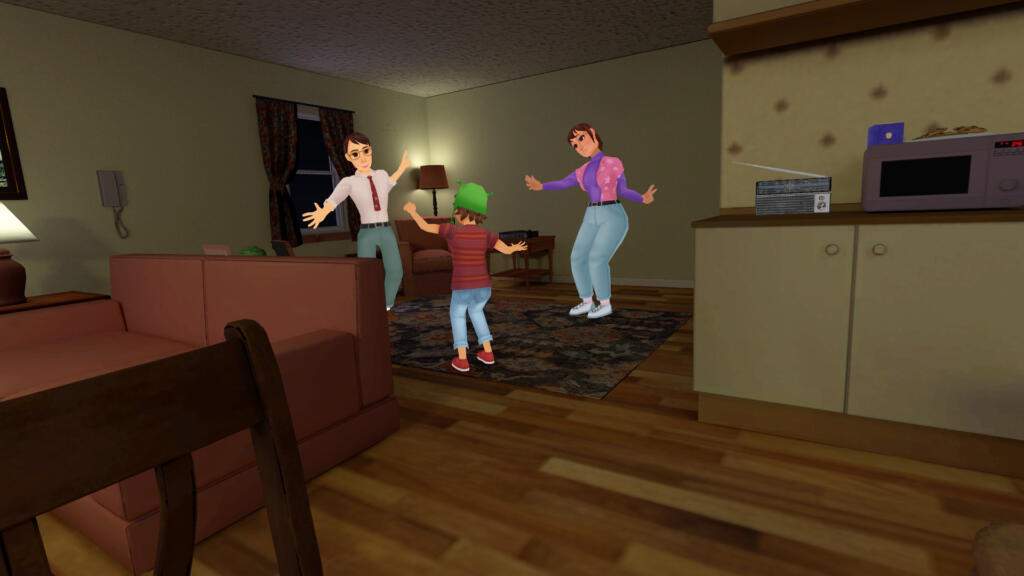
Welcome to Respite.
However, a lot of us are eager for a platform that is created for theatrical experiences like ours. I keep envisioning a virtual theater that has different booths and doors for performances, you could browse the lobby, find something you want to see, purchase a ticket, and then come back for your performance time, punch in a code with unlocks the door and you enter the lobby of the show you want to see.
It’s a dream, but I hope someone is out there who wants to build it, a virtual playhouse to hold VR performances from around the world!
Right now, we stick to VRChat because it allows the most affordances with avatars and worlds while still being Quest friendly. As people are still discovering that VR theater exists, we want to make it as accessible as possible, which means creating Quest-friendly worlds, even if VRChat limits us to only 50mb for our worlds.
How do you define intimacy in VR?
Deirdre V. Lyons: The feeling of being seen. Of connecting with the other person who is the spirit of the Avatar you are standing across from. It is a shared laugh. A virtual hug. The warmth of a voice or the singing of a lullaby.
How would it be possible to define the “responsibility” of the actors in VR? Would it differ from the live acting? Is it possible to compare this to the traditional performance formats with 4th wall but also to immersive theatre performances?
Deirdre V. Lyons: For those not used to VR, the tech can be very intimidating, so it’s doubly important that we create a process that gets our audience into the show in a way that isn’t “tech-scary.” Actors must know the equipment, understand the onboarding process, and teach the audience how to use any menus or controllers which at the same time prepares them for the journey of the show, putting them in the right mindset. This is very similar to what immersive theater does in their onboarding process IRL, and we’ve carried those practices into VR.
However, like all theater, our overarching responsibility is to give a sincere performance that will connect to the audience on some level.
What is the main difference in guiding the audience? How can you handle more naughty audience members or how can you encourage them to become more active?
Deirdre V. Lyons: Very often we are working with a “scene partner” who is also the audience, yet they will not “know the lines” or what they are supposed to do. Therefore it is incumbent upon us, the performers, to give them the permissions and boundaries of the world. This will often call for a lot of improvised and devised theater skills as you will need to tell your audience what is okay and what isn’t, but it should always be done in a way that aligns with the story and your character without punishing members of the audience for doing something bad or wrong even while chastising them for going the wrong way or doing something incongruent with the story. Usually, as long as it is done in character, this will come off without a hitch. So it’s best to really know your character and backstory, because you will need to say something when they ask or respond in unexpected ways.
Often, actors must use their skills as a person who studies human behavior to understand what tactic to take in difficult circumstances. For example, if an audience is reluctant to participate, then allow them the space and time they need, and hopefully they will become more comfortable in time. Or, for more destructive audience members, I always try and find a way to deflect in these instances, acknowledging them and then quickly changing their focus to another item or move on to another part of the story. It doesn’t always work, but it’s usually the first go to, then a direct acknowledgment and a statement of consequence, is my next step.
After that, in the rare circumstance, that an audience member is destructive or rude, then more extreme measures might be in order, but it is such a rare occurrence, that these situations must be handled on a case by case basis.
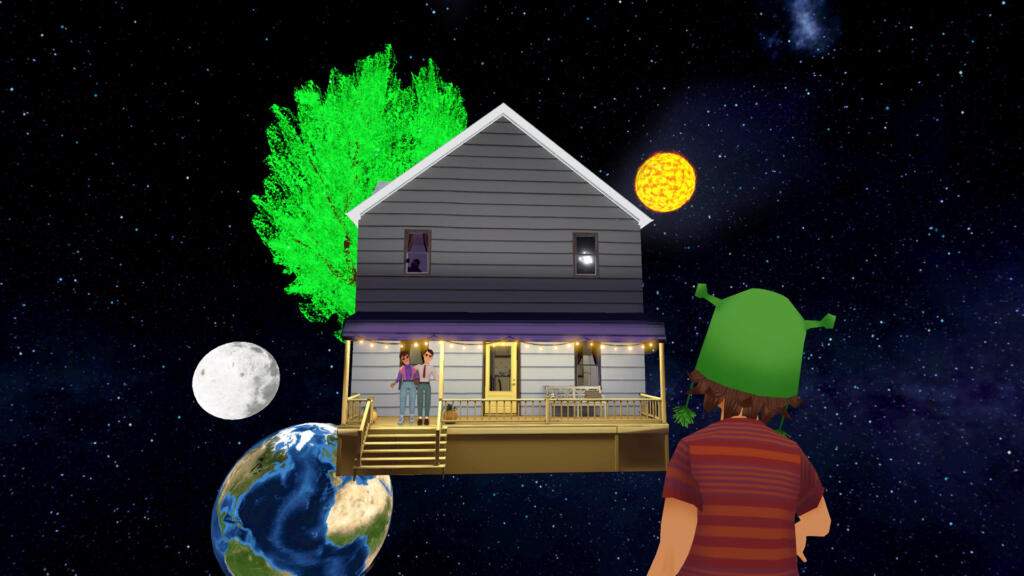
More from Welcome to Respite.
Do you think that this type of digital format of theatre will have a reverse effect on analogue performances?
Deirdre V. Lyons: We live in such a media-rich world now; we are able to curate our own preferences in entertainment. It used to be there were only a handful of channels, now we have all kinds of cable channels and streaming services. VR theater is just another way to experience stories, some will prefer it and others will lean toward more traditional venues.
It will also open theater to those who find it difficult to attend in person, either because of a personal limitation or because of a physical one. It will be more available to those in remote areas or across continents.
How do you see in what manner is VR affecting your own acting style? What will you bring back – if you return – to physical performing formats?
Deirdre V. Lyons: The ability to embrace imperfection and trust myself to navigate unexpected circumstances.
In VR, there is a good chance that there will be a technical difficulty at some point during the show, or multiple times, or it could fail you completely in performance. This happens so often it has almost become another character in the show.
It has been a true gift to relieve myself of the burden of perfection, as it is a boring goal, built on fear and never more so than in an emerging artistic field.

Welcome to Respite.
How do you see will be there – in the future – actors who are working only in VR? How would their education differ from the “traditional acting”?
Deirdre V. Lyons: This is such a powerful storytelling platform, with all its untapped potential, that I can only see it growing. Maybe someday there will be actors who work exclusively in VR, but often actors move from job to job, tweaking their performance based on the platform. From film to theater to VR, we are all trying to do the same thing, to sincerely connect with an audience and evoke a response. The different mediums just dictate how we do that, but the goal is the same.
So, while I think that eventually there will be a class in an acting curriculum that includes VR, AR and tech performances, I don’t see it replacing the foundation of an actors training, because ultimately that comes down to the same thing: honesty and connection.
Do you think that now new genres are born, genres are merging, or these are old genres remediated with the help of new technology? Your piece Welcome to Respite was selected to several film festivals’ VR section, although these are very heavy theatrical based – in my opinion. Can this also be considered as a new rediscovery of theatrical liveness or was it always there?
Deirdre V. Lyons: We are still very early in the discovery process of VR, it is at the intersection of gaming, film, and theater. But we have yet to tap the potential of what it will become, which will also change as tech improves, the internet becomes faster, new things are discovered, and more people become comfortable with it, know how to use it, and have ones accessible in their home.
Like the 20’s for film, or the 70’s for computers, it’s the wild west of technology and anything is possible. When films were invented, people thought, “Well, this is cool…but what do you do with it? How long should a movie be? What is the best way to tell a story? How do we get sound in there?” It took a hundred years to get where we are now with fast cuts, soundtracks, and CGI. The same with computers, and now almost every home has one. These are all tools, and it takes some time to figure out all of the uses a tool may have.
VR will naturally develop its own way of telling stories, as we discover what works and doesn’t in VR and eventually understand what the best practices are. The film festivals have been started to embrace this, but eventually, there will be more VR content as creators embrace this storytelling platform. And then it will be its own thing, with its own version of the Oscars or the Tony’s.
Stay tuned, it’s on the horizon, and it is closer than we think.
This interview originally appeared in Játéktér journal issue no. 2021/4 in Hungarian language. It was made in the frame of International Visegrad Grant‘s fund no. 22020523 for Zip-Scene Conference and Vektor VR.
This article was originally published by ZipScene Magazine on March 8th, 2022, and has been reposted with permission. To read the original article, click here.
This post was written by the author in their personal capacity.The opinions expressed in this article are the author’s own and do not reflect the view of The Theatre Times, their staff or collaborators.
This post was written by Ágnes Bakk.
The views expressed here belong to the author and do not necessarily reflect our views and opinions.

